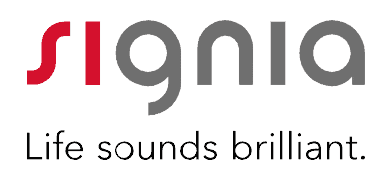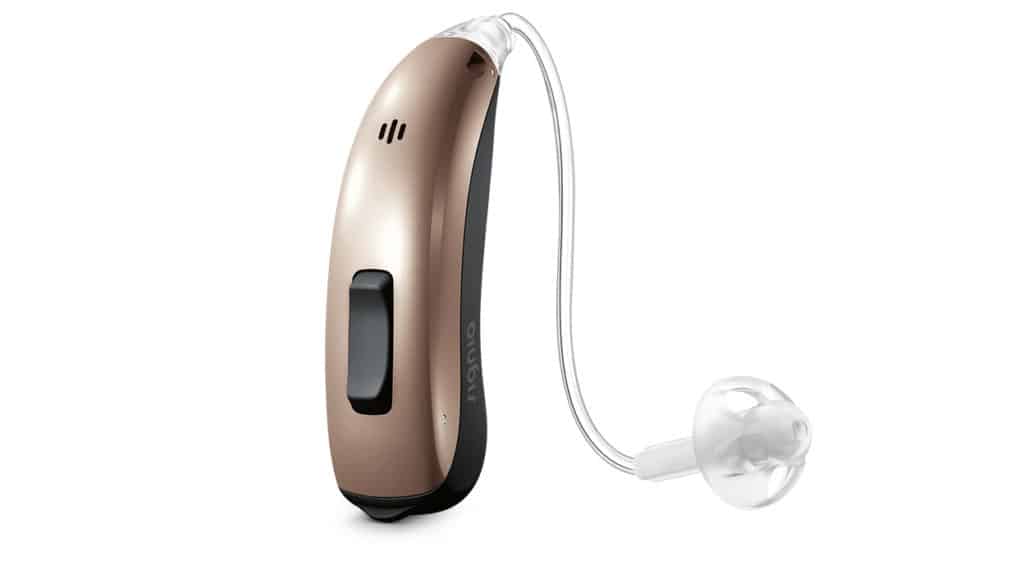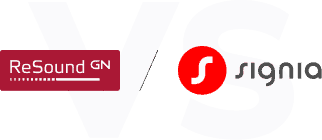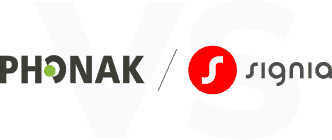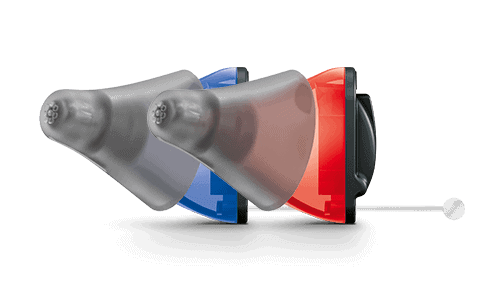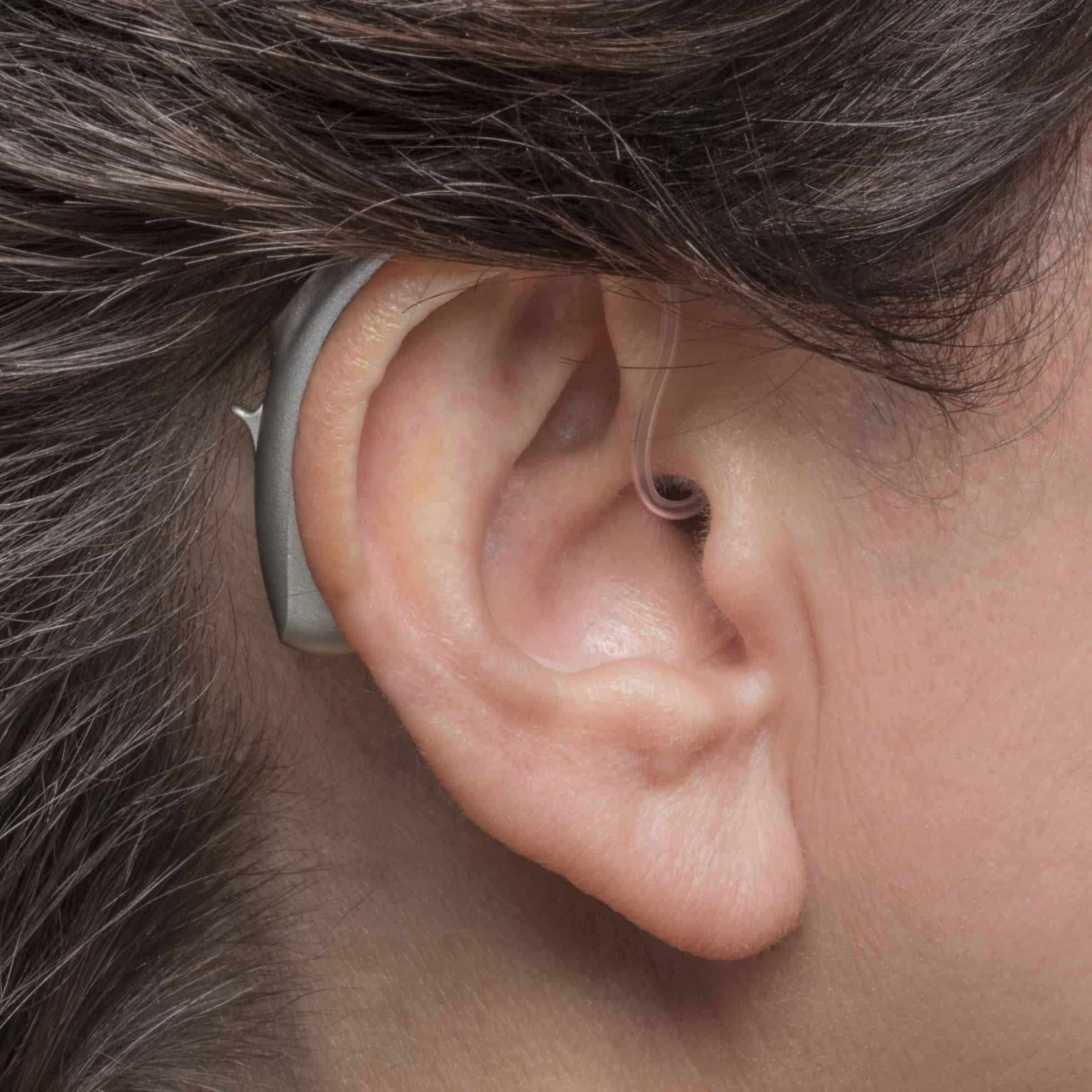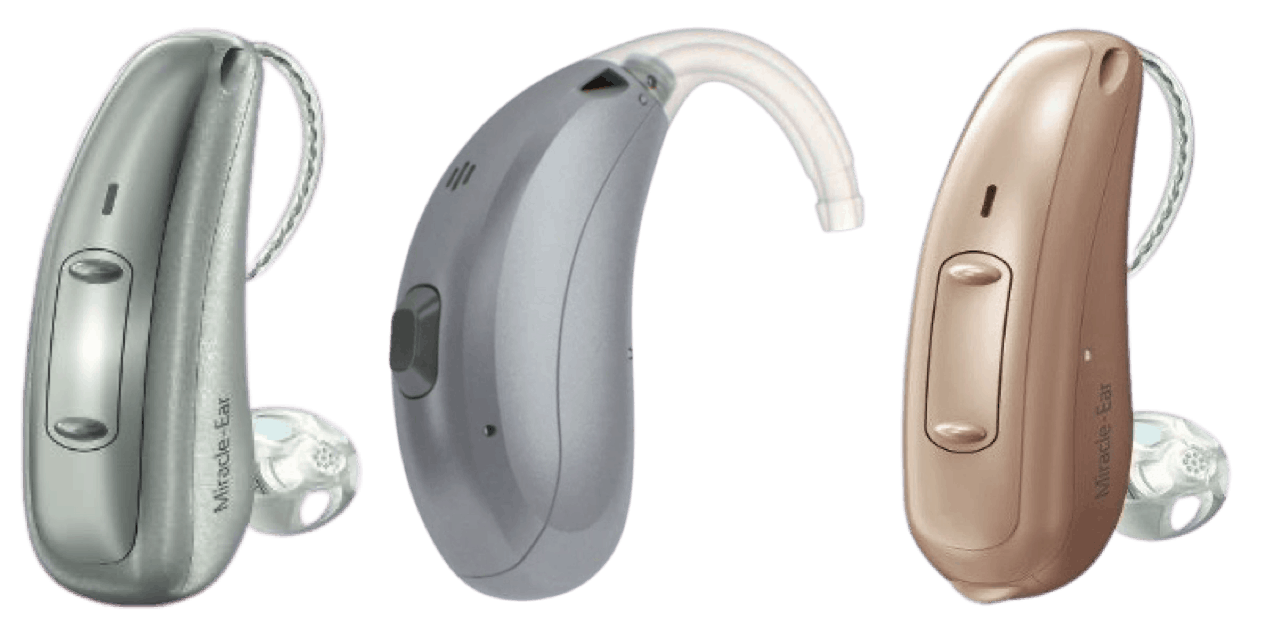Signia Hearing Aid Reviews
Signia offers a variety of prescription hearing aid styles with advanced technology for all levels of hearing loss.
How We Tested and Evaluated Signia
We spent over 50 hours testing and reviewing Signia’s hearing aids. We considered how their technological advances have improved over the years, and how they’ve kept up with the times by adding Bluetooth accessibility, an easy-to-use app and ever-improving sound quality. We also consulted with Dr. Ingrao to learn about his experience with Signia.
We took special note of their current offerings and kept these important attributes in mind:
- Styles: Signia manufactures hearing aids that range from nearly invisible to visible but discreet. There is something to fit every hearing-loss level and personal preference.
- Service: We appreciate that Signia is available from local hearing professionals who can give you a thorough exam and make recommendations based on your needs. We also like knowing that patients have someone they can trust to reach out to over the years. That level of care is incredibly valuable for older adults, who benefit from ongoing annual checkups and technical support.
- Cost: Like all prescription hearing aids, Signia can get pricey. Their costs may also be highest in certain geographic locations, such as large cities. For people who can’t afford Signia’s most recent offerings, older models remain available at better price points.
- Accessories: Signia’s lineup includes accessories that enhance hearing capability. We like that older adults can enjoy television with their family or friends by using Streamline TV. We also appreciate the brand’s microphones, which make conversations easy to hear in crowded places such as restaurants.
Below are our ratings for different aspects of Signia’s hearing aids out of five stars based on our experience:
- Variety of styles: 5
- Tinnitus features: 5
- Mobile app experience: 4
- Technology: 5
- Accessories: 5
- Affordability: 3.5
In the world of hearing aids, Signia offers one of the broadest ranges of products and price points. If you haven’t shopped for a new hearing aid in a while and the name Signia is unfamiliar to you, read on.
For this year’s review, we spent over 50 hours testing Signia’s Pure Charge&Go BCT IX hearing aids and speaking with a Signia audiologist. We’ll go through Signia’s current portfolio, discuss how they compare to our other picks for the best hearing aids and share our findings after taking a few of their hearing aids on a test drive. We also consulted with one of our resident audiologists, Dr. Brad Ingrao, about his experience and insights on Signia.

How Does Signia Stack Up to Other Brands?
Signia hearing aids are durable, reliable and available at a variety of price points. Plus, Signia offers a lot of different products, giving you plenty of options when it’s time to invest in a hearing device. It’s always good to know what else is out there, however. If you aren’t sure about Signia or you want more budget-friendly options, be sure to check out some of the best providers we have reviewed.
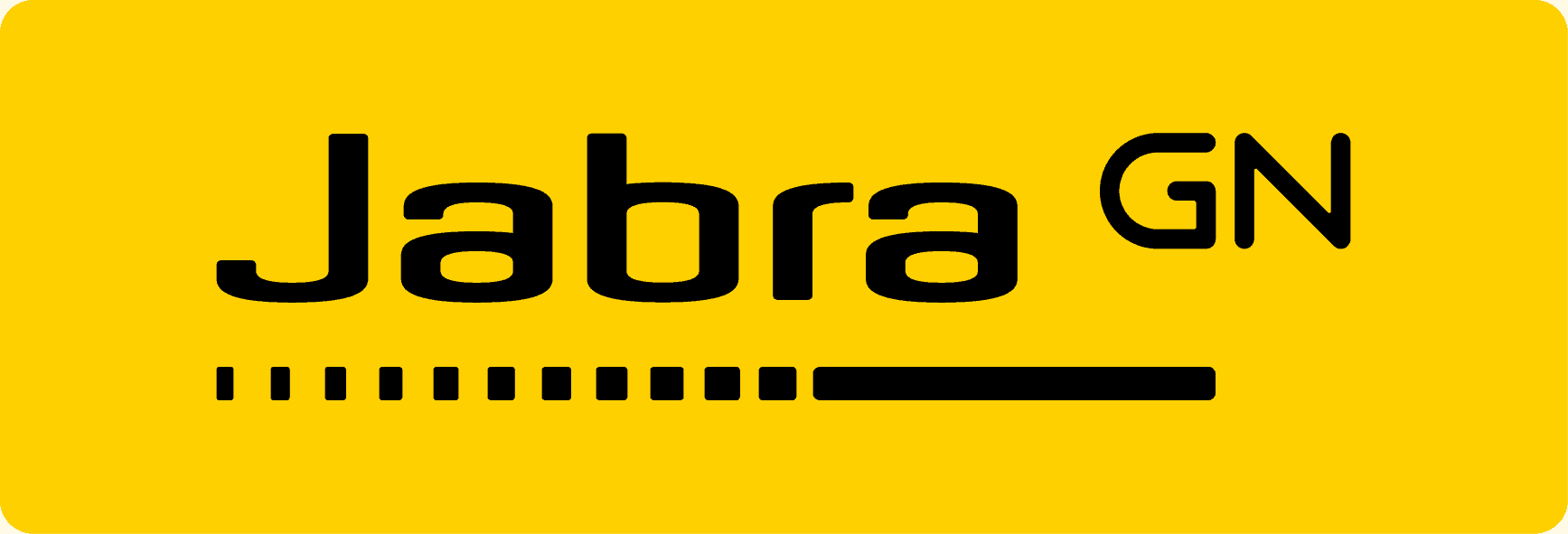
Broad Product Portfolio

The Signia technology we tested for this review is primarily used for the IX series, but the predecessor, NX, is still around and may be good for folks on a budget. The IX series is available in all form factors, including the Styletto super-slim receiver-in-canal (RIC) and the Silk, a nearly invisible, ready-fit, completely-in-canal (CIC) model.
IX is shorthand for Signia’s Integrated Xperience with RealTime Conversation Enhancement Technology platform. Here’s how it works: Picture the way conversations take place in the real world — say, around a table in a noisy restaurant. People turn toward and away from each other based on the conversation’s flow. People also interrupt each other or speak as they enter or exit the conversation’s sphere. One of the primary benefits of IX technology is its ability to help you follow group conversations in noisy places, even if head or body motion — by either the speaker or the listener — is taking place. IX pinpoints and hones in on conversations so you can easily hear and follow them in crowded or windy environments. We found this to be the case when we tried Signia’s Pure Charge&Go BCT IX in a crowded coffee shop. The technology is designed with multistream architecture that can even track multiple speakers simultaneously. The IX platform has been integrated into several Signia lines, including Styletto, Silk, Insio and Pure Charge&Go.
Did You Know? Untreated hearing loss and difficulty following conversations often causes isolation and reduced socialization in older adults. If you find yourself declining invitations because hearing loss is getting in your way, it’s probably time to have your hearing checked.1
Styletto IX
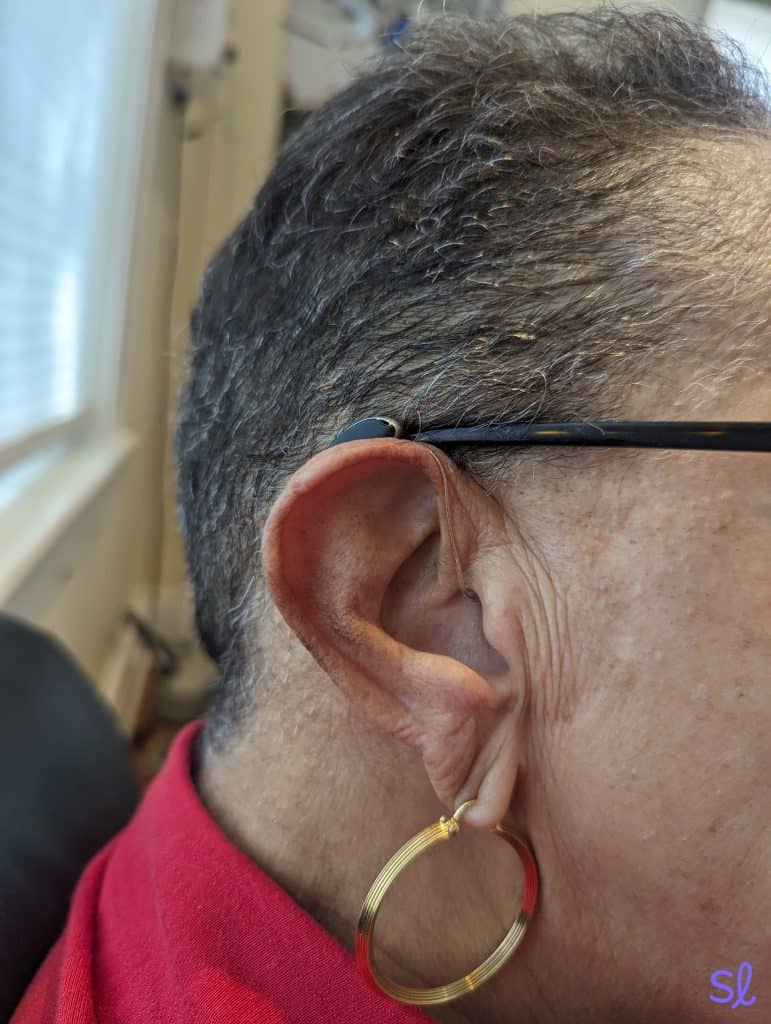
A patient wearing Signia Styletto hearing aids
The Styletto IX RIC hearing aid comes in a sleek, super-slim case. As the name suggests, it has a stylish, sophisticated look and appeal. Styletto IX takes up less space behind the ear than traditional RIC hearing aids, so it’s comfortable and lightweight for all-day wear. It’s rechargeable, comes with a wireless charging case and holds a charge for up to 24 hours of regular use.
If you have an iPhone, you can use the devices for hands-free calling and Bluetooth streaming. Bluetooth is also available for Android.
Pure Charge&Go IX
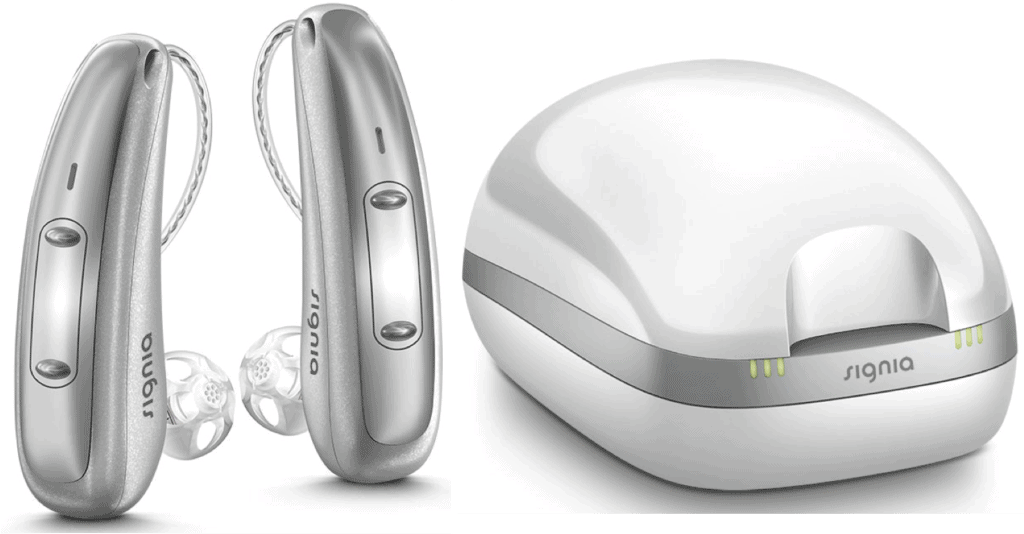
Pure Charge & Go RIC and Charger
Pure Charge&Go IX behind-the-ear (BTE) rechargeable hearing aids have a super secure fit that many patients like. Another plus is the option of adjusting the hearing aids through the Signia app or by using tactile push buttons on the devices themselves.
In addition to IX technology, the hearing aids have Own Voice Processing technology that makes the sound of your own voice natural and comfortable to your ears.
Motion BTE Hearing Aid
Pure Charge&Go BCT IX
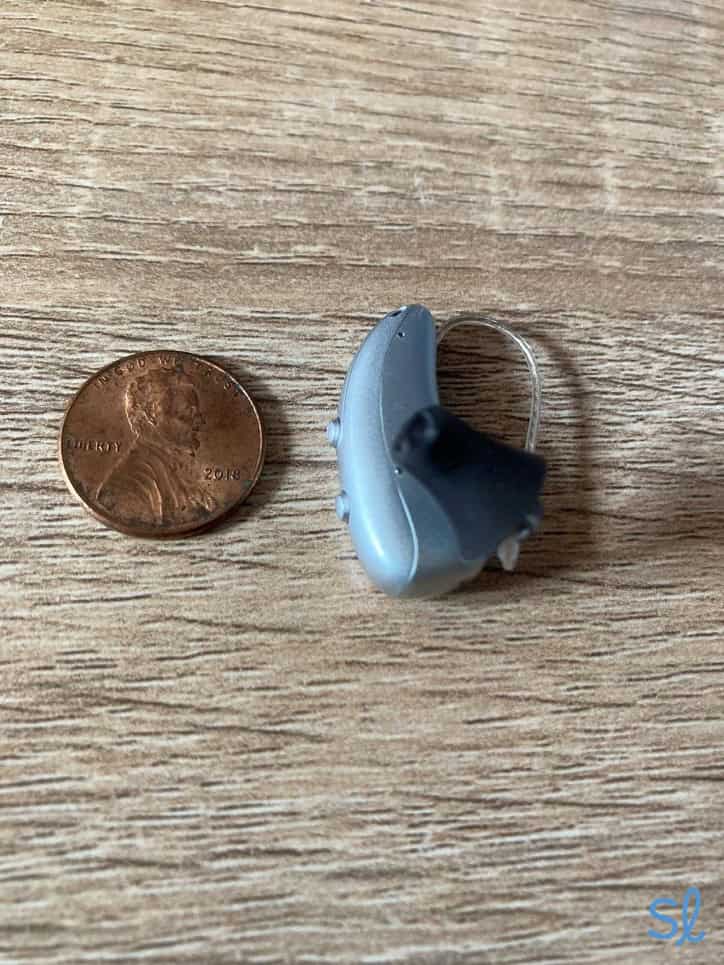
Testing the Signia Pure Charge&Go BCT IX
The BCT IX is the most recent addition to Signia’s Pure Charge&Go line. The RIC hearing aids can be prescribed for people with hearing loss ranging from mild to profound. We had the opportunity to test the model over the course of several weeks and found them comfortable to wear and easy to program and operate.
The hearing aids connect to power through Bluetooth Classic and telecoil. They have the longest battery life of any Signia hearing aid currently available. When we first opened the hearing aids, it took them about four hours to fully charge. They retain power for 54 hours on a single charge without streaming or 36 hours of power with five hours of streaming. We find it impressive that Signia redesigned the chip they use in their hearing aids so that level of battery power could be achieved. This is only one example of Signia’s commitment to technological advancement.
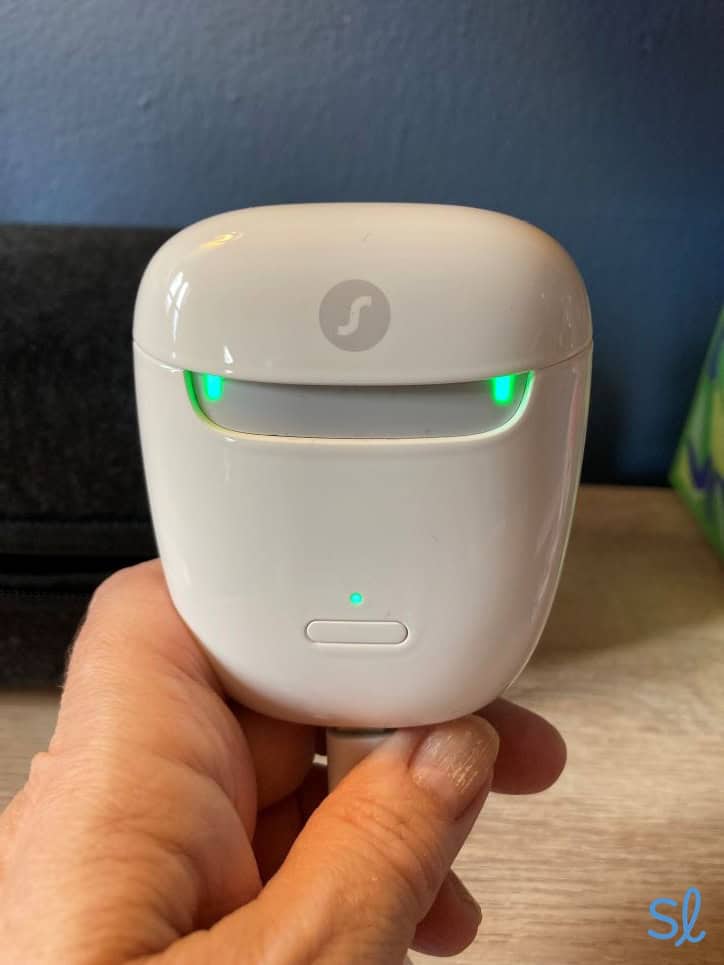
Charging the Signia Pure Charge&Go CT IX hearing aids
The hearing aids come equipped with several tinnitus tools, including NOTCH therapy, which produces a neural process that inhibits tinnitus sound and steady-state or modulated sounds such as white noise or ocean waves. Our tester has mild tinnitus in one ear and found the white noise sound to be comforting.
Signia’s BCT IX relies on Live Neural Network AI technology to instantly and automatically modify your sound program to match your hearing needs and the listening environment you’re in. Since you won’t need to fiddle with your hearing aids or adjust an app, it amplifies public discretion and eliminates a significant obstacle to using hearing aids that many patients reference.
The hearing aids connect to an app, so you have that option if you prefer to change programs or make adjustments manually. You can also adjust each hearing aid individually by tapping the buttons on your left or right device. The app is easy to install and use. We found that pairing the hearing aids to the app took less than a minute or two.
The app contains several tools we find helpful, including volume control, a conversation clarity tool and health tools such as step counting and conversation counting, which is a good way to keep on top of your socialization time.
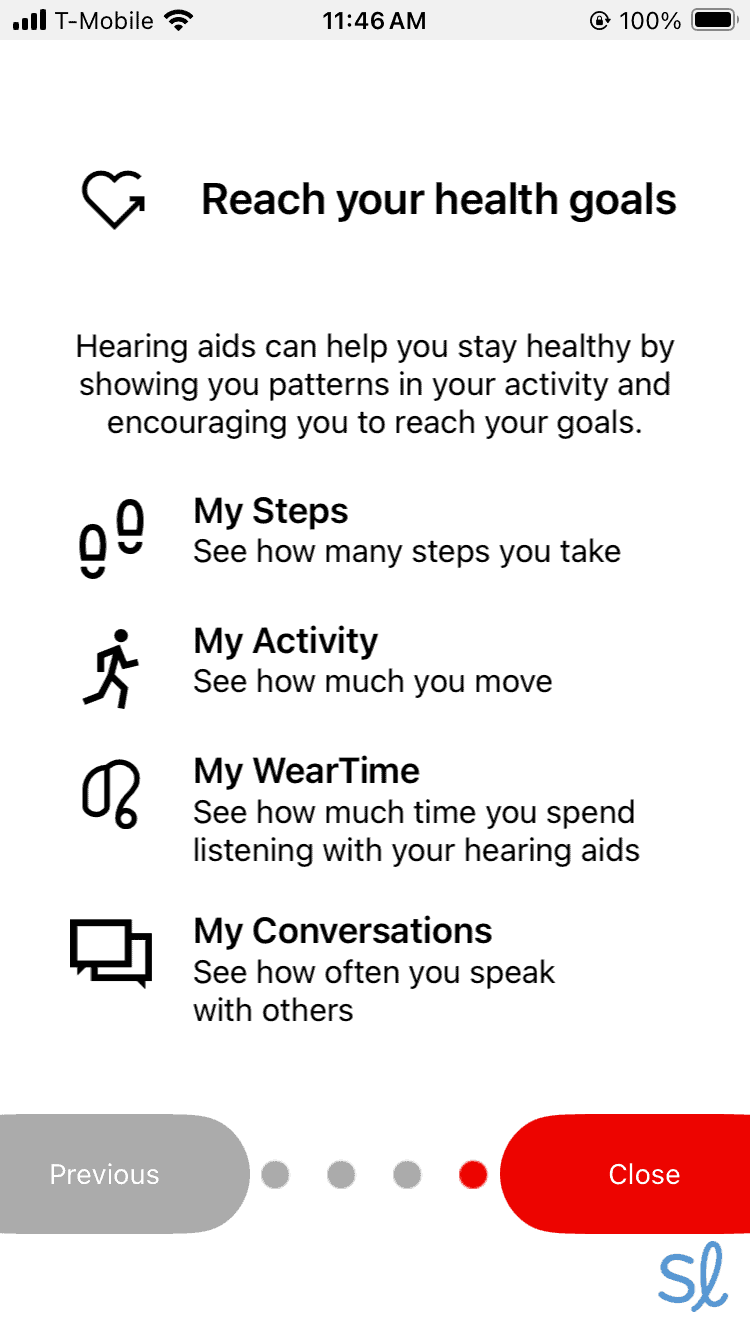
Using the Signia mobile app image
Insio IX CIC/IIC
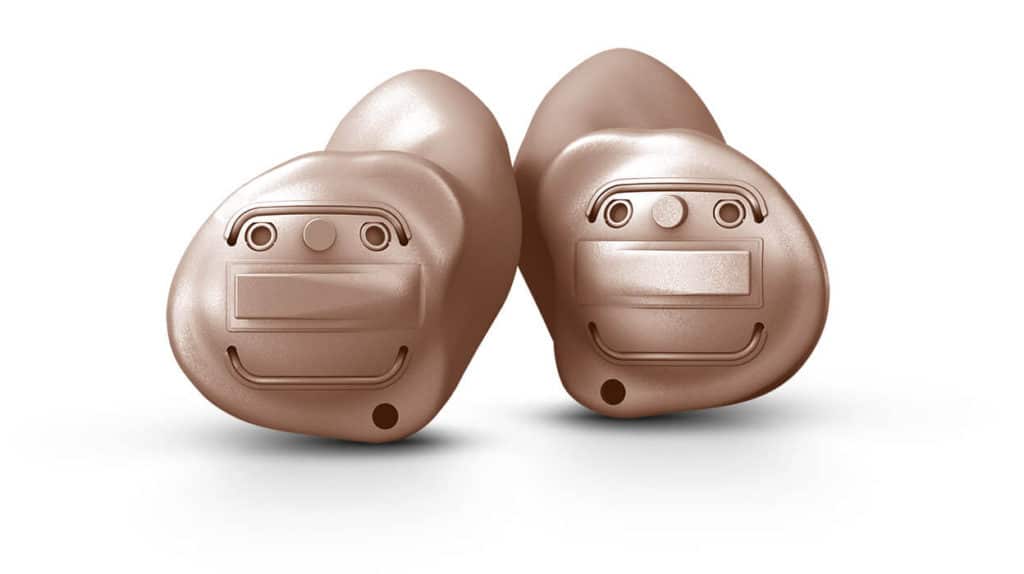
Insio Nx ITC/ICE
Signia’s in-the-ear (ITE) product line is called Insio. Insio IX hearing aids are small and discreet. They’re recommended for people with mild to moderately severe hearing loss who want a nearly invisible hearing aid. The hearing aids are available in CIC and invisible-in-canal (IIC) styles. If you prefer discreet-looking hearing aids, you can also check out the best invisible hearing aids of 2025.
Under the hood, the hearing aids are the same as the Pure and Styletto but in an all-in-one design. One caveat with ITE instruments: Those smaller than a half-shell and some in-the-canal (ITC) models usually have only one microphone. That limits how well the hearing aid can reduce background noise.

Insio Nx IIC/CIC
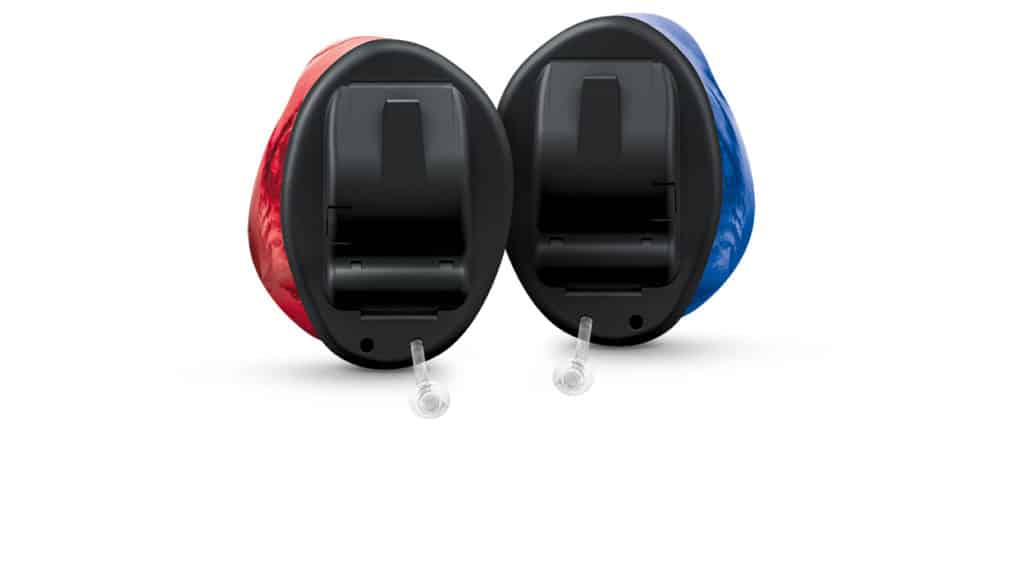
Insio Nx IIC/CIC
For those looking for a nearly invisible hearing solution, the CIC or invisible-in-canal (IIC) style may be a good option. While they only have one microphone, the deep position inside the ear canal allows for some natural directional benefit.
Products for Unique Needs
Signia makes several products for a smaller subset of folks, but they are worth mentioning.
CROS and BiCROS
The majority of people with hearing loss have an equal loss in both ears. Some, however, have either single-sided deafness or asymmetric loss, in which one ear is too distorted to benefit from direct amplification. For those folks, contralateral routing of signal (CROS) or bilateral CROS (BiCROS) can be helpful. In the case of true single-sided hearing loss, a microphone and wireless transmitter sits on the poorer side and sends sound to a receiver on the other side. If there is also hearing loss in the better ear, the receiver is also a hearing aid. The system looks just like two hearing aids. It doesn’t provide true directional hearing, but it alleviates the logistical problems of not hearing on one side, such as always needing to sit in a certain place or leaning toward speakers to hear better.
Did You Know? In the United States, single-sided deafness (SSD) is most common in people ages 60 to 79. Women are more likely to have SSD than men.
Silk Charge&Go IX
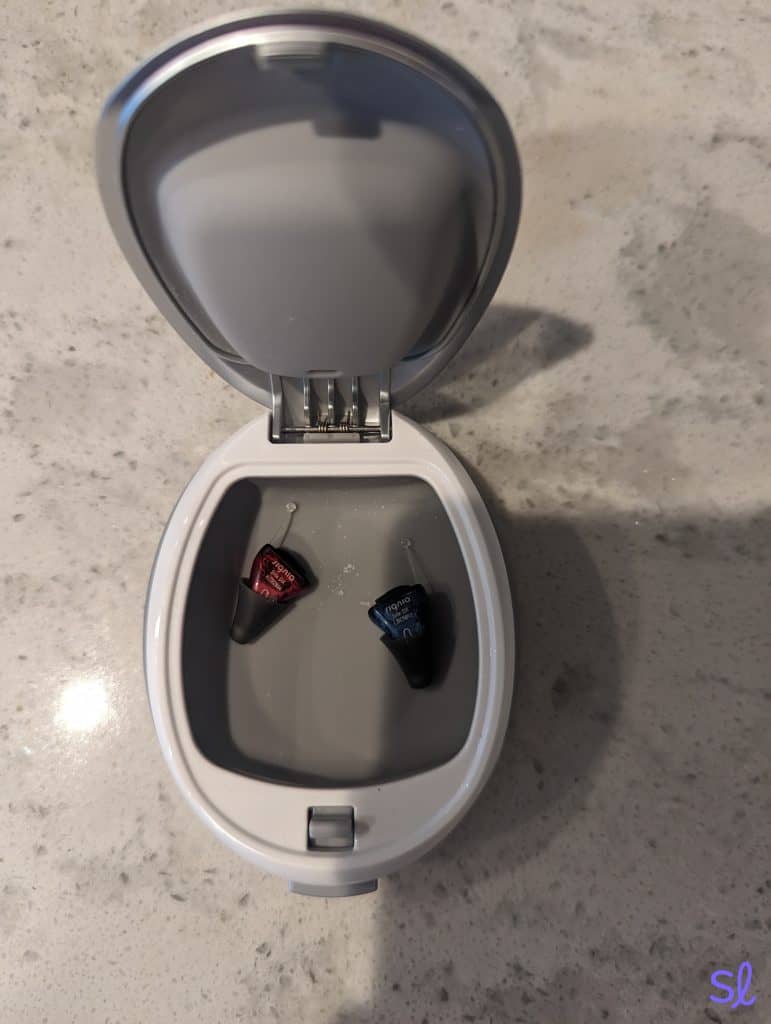
Trying out Signia's Silk hearing aids
Typical CIC instruments are custom made to fit your ear canal. That means you need to have an ear impression taken, which translates into a wait time of several weeks before your hearing aids are ready.
Using the same click sleeve system employed in their domes, Signia can provide CIC size and discretion for many people (depending on the size and shape of the ear canal) in an instant-fit form factor. That means you won’t have to wait the extra weeks to get your devices. The rechargeable hearing aids provide the same IX features as Insio. They’re adjustable through the Signia app.
They’re not for everyone, but Silk Charge&Go IX can provide a good solution for people who want a CIC, but can’t (or don’t want to) wait once they decide to move forward with hearing improvement.
Signia Accessories
Like other major manufacturers, Signia recognizes that even the best hearing aids are susceptible to the negative effects of distance, reverberation and background noise on speech understanding. To address that, they offer a series of accessories. The ones described below are all compatible with the IX line. Some may also work with older products. If you have an older Signia hearing aid and think some of these may be helpful, contact your hearing care professional and ask about compatibility or alternate versions for your devices.
StreamLine Mic
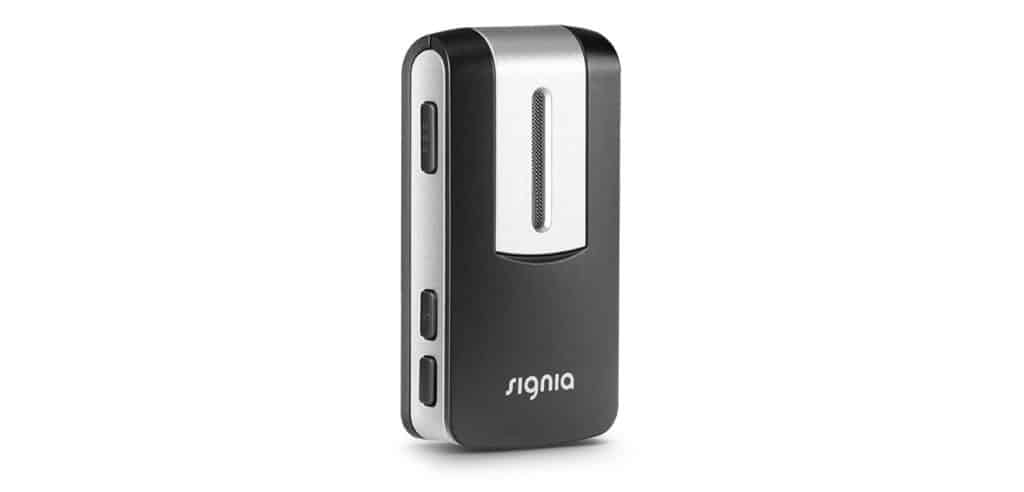
StreamLine Mic
Hearing aids work best when they are less than 12 feet from the sounds they are capturing. Beyond that, the quality of the signal is degraded significantly by reverberation and background noise. The StreamLine Mic is held or clipped very close to the speaker’s mouth. It captures the signal at an ideal signal-to-noise ratio, and then beams it wirelessly to your hearing aids. The range is between 60 and 80 feet depending on the type of room you’re in.
In addition, the StreamLine Mic can act as a Bluetooth rebroadcaster, allowing paired Bluetooth audio devices to stream to the hearing aids.

StreamLine TV
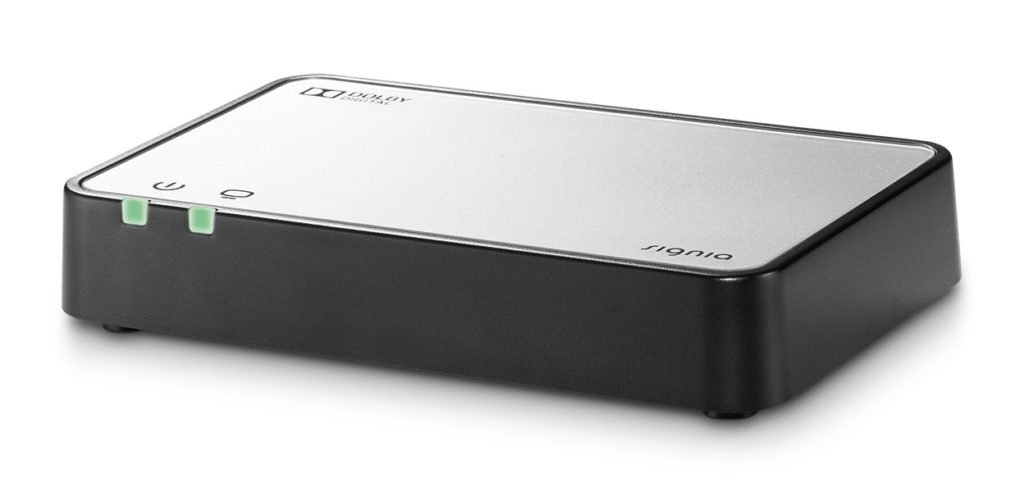
Streamline TV LED
Similar in concept to the StreamLine Mic, the StreamLine TV connects to your TV or cable box and streams the audio directly to your hearing aids. Because it uses an audio output, the TV speaker volume can be set to the comfort of those without hearing loss (or muted for private listening), and the hearing aids can be adjusted to your needs.
Setup is simple and once connected, it is pretty much hands-off.
Remote controls
Hearing aids today, including Signia models, are designed to operate automatically. However, as Finley Peter Dunne implied when he said, “Trust everyone, but cut the cards,”3 having a manual override is always a good idea. The majority of Signia products have on-board controls, but the buttons are pretty small. Remote controls not only offer sausage-fingered folks like me a way to adjust volume and programs, but they allow caregiver access to hearing aids for patients who may need additional assistance, particularly those with dexterity or memory issues. Signia offers both stand-alone remotes and smartphone applications for that purpose. This review will cover only the current version of each. Other, older versions may be an option and should be discussed with your hearing care professional.
miniPocket Remote Control
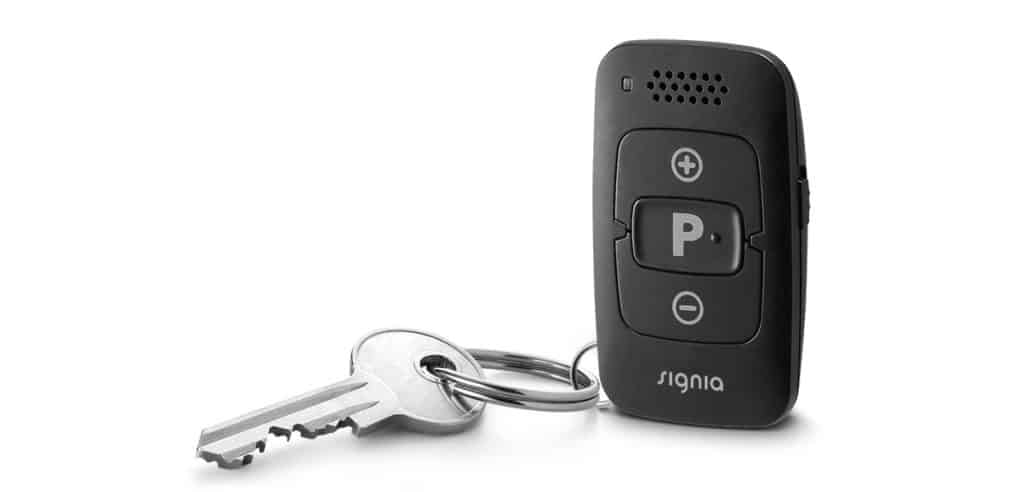
miniPocket Remote Control
The mini pocket control is very basic. It allows you to control volume and toggle between programs. The remotes are a good match to folks who prefer their hearing aids to be automatic, but occasionally need minor adjustments or a specific manual program such as a telecoil program for a hearing loop at church.
Signia App
Recently, Signia combined several of their smartphone applications into a master app that’s simply called the Signia App. The app is very easy to use and pairs with Signia hearing aids easily and quickly.
In addition to serving as a remote control, it allows for quite a bit of fine-tuning and provides information about the hearing aids, Care Chat with your hearing care professional and the 24/7 Signia Assistant feature. It also contains a WellBeing feature, which tracks your steps, standing time, social interactions and hearing aid usage time.
Basic Remote Control
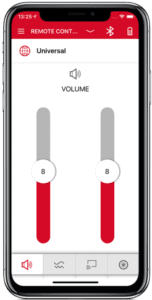
Volume Control
The app provides a hearing program and volume control, as well as sound-balance adjustment and battery-level monitoring.
Directional Hearing
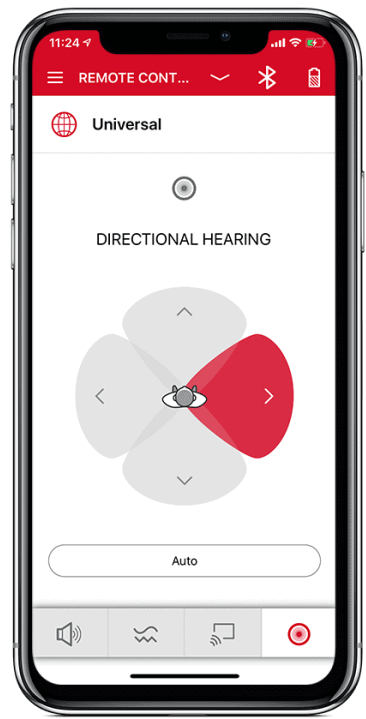
Directional Hearing
In this view, the user can fine-tune the behavior of the directional microphone. It’s often used in the car to allow the driver to hear the front-seat passenger while reducing road noise.
Connectivity and Streaming
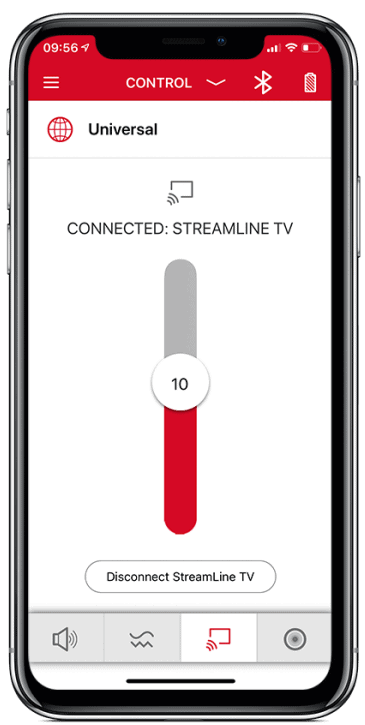
Accessory control
When the StreamLine TV icon is selected on the lower ribbon, this slider changes the volume of the TV signal. It affects only the streaming volume, not the TV speakers. You can also use the feature to adjust the StreamLine Mic volume.
24/7 Signia Assistant
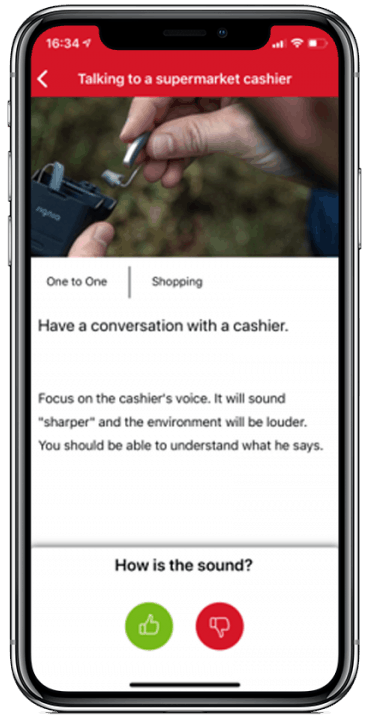
In-App Assistant
The 24/7 Signia Assistant is powered by artificial intelligence (AI). It helps you optimize sound quality and the sound of your own voice, and it offers other features, such as handling noise and conversations.
Care Chat
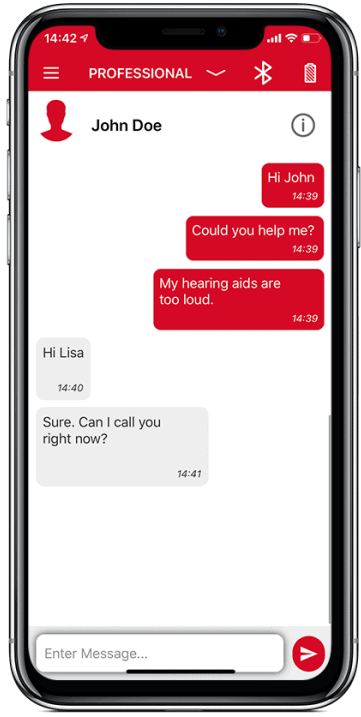
TeleCare Chat
If you get stuck, you can reach out to your hearing care professional for support via text, video or phone call.
Customer Service
I’ve always found Signia customer care to be very good. For dispensers, they offer phone support, online resources, and both in-person and online training. For end-users, they have a wide range of text- and video-based resources on their website. We like how they opted for text-based instructions rather than narration with captions. This “open captioned” approach doesn’t require the viewer to enable captions.
Compare Signia to Other Providers
Signia vs. the Competition
Signia is an excellent prescription hearing aid option, but they may not be the best fit for everyone. Below is a look at how Signia compares to other prescription and over-the-counter hearing aid brands.
| Signia | Eargo | Phonak | Oticon | |
|---|---|---|---|---|
| Available without a prescription | No | Yes | No | No |
| Bluetooth compatibility | Yes | 1 style only | Yes | Yes |
| Estimated cost per pair | $2,000 to $7,500 per pair (estimate) | $799 to $2,699 | $2,000 to $7,500 per pair (estimate) | $2,000 to $7,500 per pair (estimate) |
Final Thoughts
“Overall, I am as happy with the current offerings from Signia as I was with that old boomer in 1992,” Dr. Ingrao says. The folks at Signia are continuing the long tradition that began at Siemens: producing solid products with effective hearing technology inside. Their lithium ion technology is just as good as — if not better than — the competition, and their utilization of 2.4 GHz wireless tech rounds out the product line beyond the ideal listening environment. Finally, their ability to stream to mobile devices makes them convenient for use in our tech-driven world.
Take Our Free Online Hearing Test
Wondering if you have hearing loss?
Grab your headphones and get an evaluation in minutes.
-
PubMed. (2020). Hearing Loss, Loneliness and Social Isolation: A Systematic Review.
-
NCBI. (2021). Prevalence of Single-Sided Deafness in the United States.
-
Goodreads. (2025). Finley Peter Dunne.

